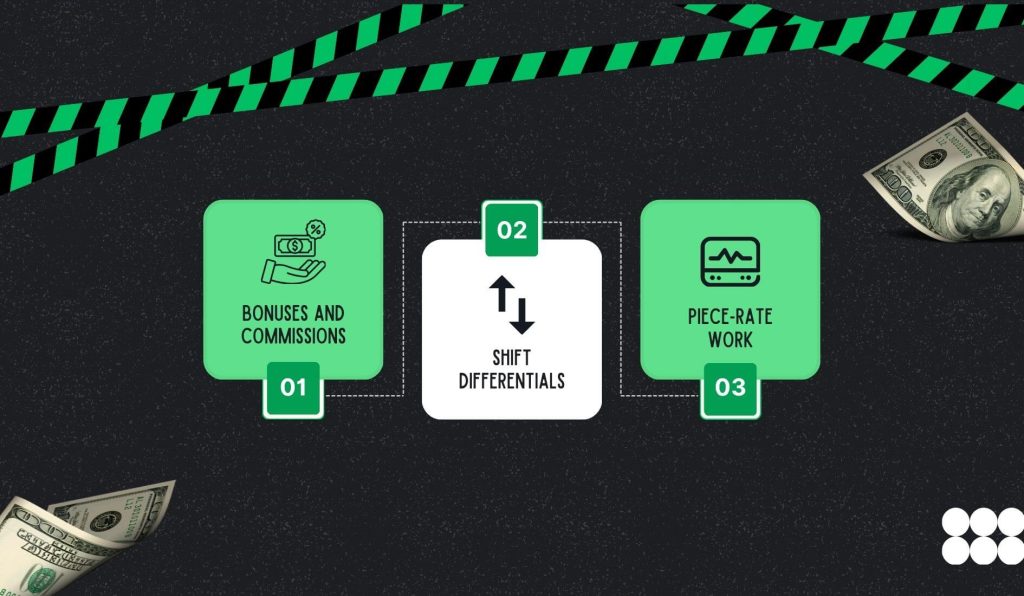- Understanding Overtime Pay Rate
- Calculating Overtime Pay for Hourly Employees
- Example of Hourly Overtime Calculation
- Calculating Overtime Pay for Salaried Employees
- Example of Salaried Overtime Calculation
- Special Considerations in Overtime Calculations
- 1. Bonuses and Commissions
- 2. Shift Differentials
- 3. Piece-Rate Work
- Tools and Resources for Overtime Pay Rate Computation
- 1. Online Calculators
- 2. Templates
- 3. Professional Assistance
- Calculate Your Overtime Pay Now!
- Frequently Asked Questions (FAQs)
Step-by-Step Guide to Calculating Overtime Pay

Primarily, overtime pay is not merely extra cash. Rather, it is a legal right. In fact, for many employees, especially hourly workers, the overtime pay rate is the difference between fair compensation and being shortchanged.
Although the concept might seem straightforward, the actual math might be complicated. That is where the final pay computation comes in. Basically, it is the last step in ensuring every hour worked is accounted for. This holds especially for those who work beyond the standard 40-hour workweek.
Now, the Fair Labor Standards Act (FLSA) governs this entire process in the U.S. It sets the rules regarding the following:
- Who is eligible for overtime?
- How is overtime calculated?
- What employers must do to remain compliant?
But even with laws in place, confusion still lingers. Therefore, read on to get a better idea of the overtime pay rate.
Understanding Overtime Pay Rate
At the outset, overtime pay comes in when an employee works more than 40 hours in a workweek. That is the baseline. However, not everyone qualifies for it.
For instance, exempt employees (like some professionals within a particular salary range) do not receive it. Meanwhile, non-exempt employees do. That is the first filter.
In general, the standard overtime pay rate is 1.5 times the regular hourly rate. That is a federal rule. In fact, some states go beyond that.
California, for instance, has daily overtime rules. In most cases, it is time-and-a-half. Hence, if someone earns $20/hour, their overtime rate is $30/hour. Although it is simple math, you must know where to start.
Calculating Overtime Pay for Hourly Employees

The following are the ways through which you must calculate your overtime pay rate as an hourly employee:
- Find the regular hourly rate. Let’s say it is $18/hour.
- Multiply that by 1.5. That gives you the overtime pay formula like (18 × 1.5) = 27
- Multiply the overtime rate by the number of overtime hours. In fact, if someone worked 10 extra hours, then calculate (27 × 10) = 270
Example of Hourly Overtime Calculation
Basically, for a 50-hour week, with 10 hours of overtime:
Regular pay is 40 × 18 = 720
Overtime pay is 10 × 27 = 270
Therefore, Total pay is 720 + 270 = 990
That is how you calculate overtime pay for hourly folks. Although it is straightforward, it only works if the numbers are clean.
Calculating Overtime Pay for Salaried Employees
The following are the ways through which you must calculate your overtime pay rate as a salaried employee:
- Take the weekly salary. Let’s say it is $800.
- Divide by 40 to get the regular hourly rate, like 800 ÷ 40 = 20
- Then, multiply by 1.5 to get the overtime rate, like 20 × 1.5 = 30
- Multiply by overtime hours. If they worked 8 extra hours, then it would be 30 × 8 = 240
Example of Salaried Overtime Calculation
Hence, total pay for that week:
Regular pay is $800
Overtime pay is $240
Therefore, Total Pay is $1,040
That is how salaried overtime calculation works. In fact, it is not about the monthly salary but about the weekly breakdowns.
Special Considerations in Overtime Calculations

The following are some of the factors you must take into account for overtime calculations:
1. Bonuses and Commissions
This is where things get complicated. In this case, you have to include non-discretionary bonuses (those tied to performance or attendance) in the regular rate.
Hence, if someone gets a $100 bonus for hitting a target, that affects their overtime rate. Then, you have to recalculate the regular rate, factoring in the bonus. Therefore, it is not optional but the law.
2. Shift Differentials
Sometimes, it is about working nights or weekends. That is where shift differential comes in. At the outset, it is extra pay for undesirable shifts. Also, it affects the shift as time passes.
Hence, if someone earns $2 more per hour for night shifts, their regular rate increases. This, in turn, increases their overtime rate. Thereby, it causes a ripple effect.
3. Piece-Rate Work
Now, piece-rate work is a whole different situation. In general, workers get paid per unit produced, not per hour. Moreover, overtime still applies.
Therefore, you calculate the total earnings for the week. The following are the steps you must take to do it:
- Divide by total hours worked to get the regular rate
- Apply the 1.5 multiplier for overtime hours.
Tools and Resources for Overtime Pay Rate Computation

The following are some of the major tools and resources you must choose to compute overtime pay rate:
1. Online Calculators
If you want to calculate overtime, there are many useful tools online. Some of them include QuickBooks, ADP, and PaycheckCity. All you have to do is plug in the numbers and get the results. However, do not rely on them blindly. In fact, always double-check.
2. Templates
In many cases, Excel templates work as well. Basically, you have to set up formulas for regular rate, overtime rate, and total pay. Moreover, customize for bonuses, shift differentials, and piece-rate. Although the process is manual, it still gives control.
3. Professional Assistance
Sometimes, it is best to call in the pros. These include HR teams, payroll specialists, or legal advisors. They will help you with final pay computation (especially when the numbers get tangled). Better safe than sorry!
Calculate Your Overtime Pay Now!
Overtime pay is not just about working late. Rather, it is about getting paid right. Whether you are hourly, salaried, or working on commission, the math matters. In fact, every factor (from bonuses to shift differentials) counts. Also, when it is time for final pay computation, accuracy is everything.
Hence, utilize the tools and ask questions. Moreover, know your rights under overtime laws. The Fair Labor Standards Act is there for a reason. Do not leave money on the table!
Frequently Asked Questions (FAQs)
The following are some of the most common questions regarding overtime pay rate:
Yes, it is important to include non-discretionary bonuses when you are calculating the regular rate of pay.
Shift differential is extra pay for working undesirable shifts. Basically, it increases the regular rate, which increases the overtime rate.
If you want to ensure compliance with overtime pay laws, do the following:
• Keep accurate records
• Utilize reliable tools
• Consult HR or legal experts.
To calculate overtime pay rate, keep track of the following records:
• Hours worked
• Pay rates
• Bonuses
• Other differentials.
In fact, documentation is key for keeping track of overtime pay rates.
Yes. As pr FLSA, exempt employees do not qualify for overtime pay. Hence, it is important always to check your classification.










